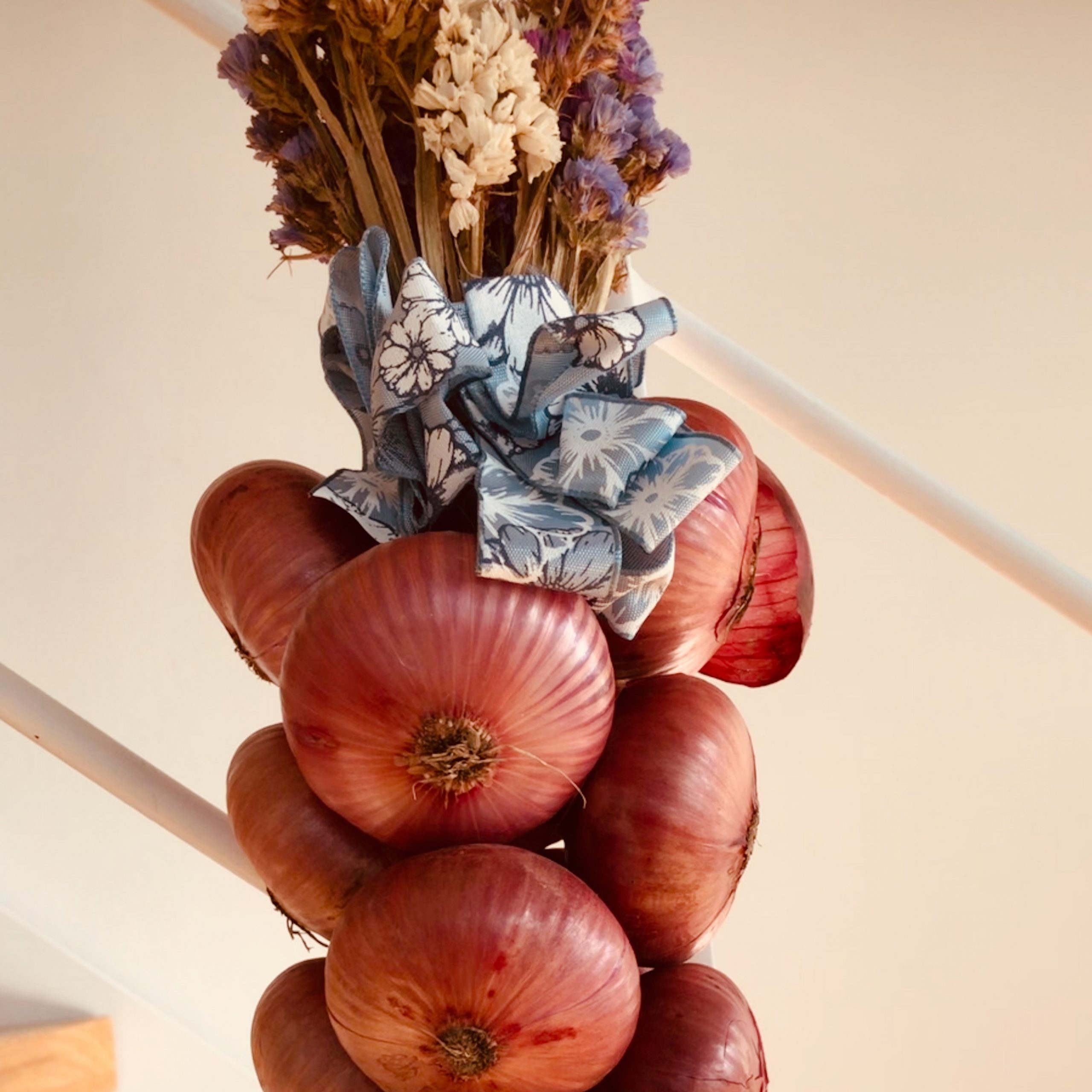Description
The Höri-Bülle is a onion that has been grown exclusively on the Höri peninsula in Lake Constance for centuries. In the loose soil and mild climate, the seeds develop into strong and aromatic plants. The cultivation of the Höri-Bülle was documented as early as the 8th century. Today it is an EU-protected speciality. The onion can be recognised by its rust-red colour and its bulbous, flat shape.
Because of its mild, unobtrusive spiciness, it is often eaten raw: finely chopped in a salad or as a topping on a sandwich. Lovers bite into the vitamin-rich fruit like into an apple.
The cultivation of the Höri-Bülle requires year-round joint effort from the producer families. All the work has to be done by hand, as in the past. In spring, the seeds obtained from the cones of the plants are scattered in the soil. During the growing and ripening period, the fields are regularly weeded with a pickaxe before many helping hands turn the delicate onion out of the ground in August. The most beautiful onions are braided into onion braids, which are stored or sold. The Höri rewards itself for the joint work with a cheerful Bülle festival.
Intention
It is impressive what a unifying force the cultivation of the Höri-Bülle has. In the families, three generations join together in the various work processes around the year. And beyond the family, communities and associations are formed that put their time and energy into the service of continuing the tradition. The added value lies not only in the high quality of this special onion, but also in the social interaction in the preservation of an old agricultural and cultural landscape. Such awareness and so much love for the cause can be an inspiration for others to counteract the desolation of nature even in a single area.
Beschreibung
Die Höri-Bülle ist eine Zwiebel, die seit Jahrhunderten ausschließlich auf der Halbinsel Höri im Bo-densee angebaut wird. In dem lockeren Boden und dem milden Klima entwickeln sich aus dem Sa-men kräftige und aromatische Pflanzen. Schon im 8. Jahrhundert wurde der Anbau der Bülle urkundlich dokumentiert. Heute ist sie eine EU-geschützte Spezialität.
Man erkennt die Zwiebel an der rostroten Farbe und einer bauchigen, flachen Form. Wegen
ihrer milden, nicht aufdringlichen Schärfe wird sie gerne roh verzehrt: fein geschnitten im Salat oder als Belag auf dem Butterbrot. Liebhaber beißen in die vitaminreiche Frucht hinein wie in einen Apfel.
Der Anbau der Bülle fordert von den Erzeuger-Familien ganzjährigen gemeinsamen Einsatz. Alle Arbeiten müssen wie früher von Hand verrichtet werden. Im Frühjahr streut man die aus den Dolden der Stängel gewonnenen Saatkörner in die Erde. Während der Wuchs- und Reifezeit werden die Felder regelmäßig mit der Spitzhacke gejätet, bevor viele helfende Hände im August die empfindliche Knolle aus dem Boden herausdrehen. Die schönsten Exemplare werden zu Zwiebelzöpfen geflochten, die gelagert oder verkauft werden. Die Höri belohnt sich mit einem fröhlichen Bülle-Fest für die gemein-same Arbeit.
Absicht
Es beeindruckt, welch eine verbindende Kraft die Kultivierung der Höri-Bülle hat. In den Familien schließen sich in den verschiedenen Arbeitsprozessen rund ums Jahr drei Generationen zusammen. Und über die Familie hinaus bilden sich Gemeinschaften und Vereine, die ihre Zeit und Kraft in den Dienst der Fortführung der Tradition stellen. Die Wertschöpfung liegt dabei nicht nur in der hohen Qualität dieser besonderen Zwiebel, sondern auch im sozialen Miteinander beim Erhalt einer alten Agrar- und Kulturlandschaft. Ein solches Bewusstsein und soviel Liebe zur Sache kann ein Anstoß für andere sein, schon in einem einzelnen Bereich der Verödung der Natur entgegenzuwirken.


